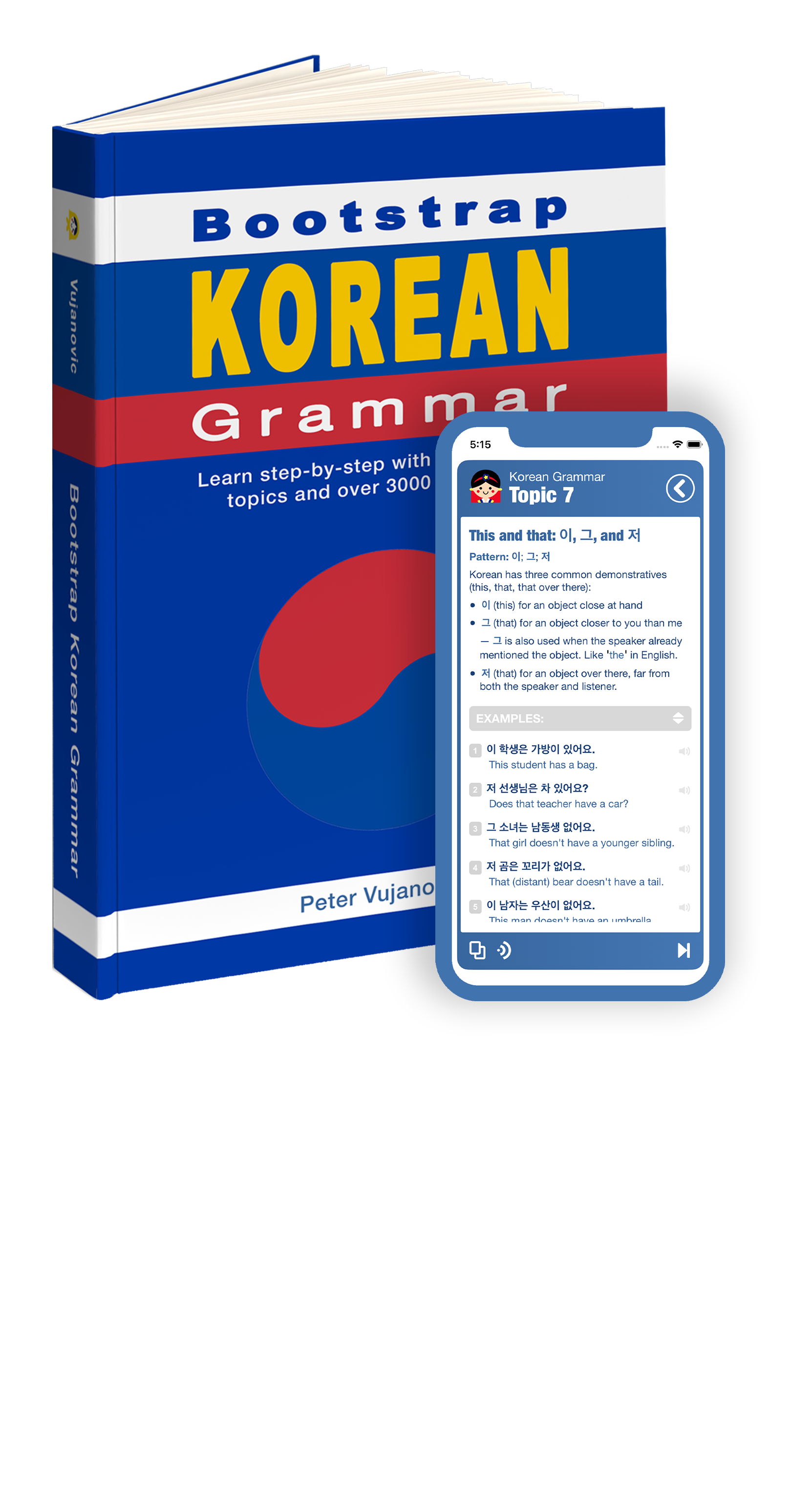Korean grammar - Location of action and non-action verbs - A recap |
|||
|
|||
Pattern: Noun + 에; Noun + 에서 This topic uses a mix of action and descriptive verbs to further illustrate the two locative particles 에 and 에서. |
| Examples: | |
|
운전사가 차에서 기다려요.
The driver is waiting in the car.
|
|
|
학생은 도서관에서 공부해요.
The student studies in the library.
|
|
|
저는 여름에 항상 행복해요.
I am always happy in summer.
|
|
|
그릇에 밥이 있어요.
There is rice in the bowl.
|
|
|
유리에 물이 없어요.
There is no water in the glass.
|
|
|
그녀는 대기열에 서요.
She stands in the queue.
|
|
|
그들은 지금 한국에서 살아요.
They live in Korea now.
|
|
|
당신은 어디에서 일해요?
Where do you work?
|
|
|
그는 어디에서 기다려요?
Where is he waiting?
|
|
|
왜 미나가 정원에 혼자 앉아요?
Why does Mina sit alone in the garden?
|
|
|
누가 부엌에서 요리해요?
Who is cooking in the kitchen?
|
|
|
상자에 무엇이 있어요?
What is in the box?
|
|
 |
|




